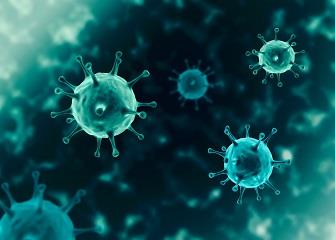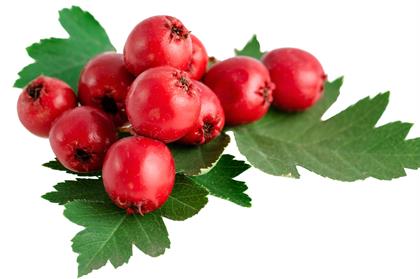
What are Fermented Raw Materials?
Fermented raw materials are natural ingredients that have undergone a fermentation process. The substrates of fermentation utilized in cosmetics industry include rice, soybeans, milk, and fruits. The substrates are used by microorganisms like yeast, bacteria, and fungi for metabolism or biosynthesis to create beneficial compounds that served as the fermented raw materials for cosmetic skincare product.
Here are a few examples of fermentation-generated compounds that are commonly used in the cosmetic skincare industry:
Alpha-hydroxy acids (AHAs) - AHAs are organic acids that can be produced through the fermentation of fruits, milk, and sugar. Because they can assist in removing dead skin cells and enhancing skin texture, AHAs are frequently utilized in exfoliating cosmetics.
β-glucans - These complex carbohydrates can be derived from the cell walls of yeast or bacteria. β-glucans are known for their moisturizing and anti-inflammatory properties, making them a popular ingredient in skincare products.
Niacinamide - Often referred to as vitamin B3, niacinamide can be generated by the fermentation of yeast. It is a popular ingredient in skincare products because aid in enhancing skin texture, reducing inflammation, and controlling sebum production.
Hyaluronic acid (HA) - HA is a naturally occurring substance in the body that can be produced through fermentation. HA has the ability to retain moisture and is commonly used in moisturizing and anti-aging products.
In addition, microbial fermentation filtrates can be employed as active components in cosmetics. For example, Galactomyces ferment filtrate is abundant in vitamins, minerals, and amino acids and is often used in anti-aging products to help improve skin elasticity and reduce the appearance of fine lines and wrinkles.
A Specific Case of Fermented Raw Material for Cosmetic Skincare Product
An example of a compound that can be produced by fermentation for use in cosmetic skincare product is hyaluronic acid (HA), a naturally occurring polysaccharide that has a wide range of applications in the cosmetic industry as a moisturizer and anti-aging ingredient. The fermentation production of HA typically uses Streptococcus zooepidemicus as the host. These bacteria are grown in a medium containing a source of carbon, nitrogen and other nutrients and fermented at a controlled temperature and pH to produce HA. HA is harvested and purified through steps such as filtration and dialysis. The resulting purified HA can then be used in cosmetic formulations. In addition to HA, other compounds that can be produced by fermentation for cosmetic skincare product include peptides and enzymes.
Applications of Fermented Raw Materials in Cosmetic Skincare Product
Fermented compounds have become a popular ingredient in cosmetic skincare products due to their numerous benefits for the skin. The applications of fermentation in cosmetic skincare products include:
Increased absorption
Fermentation breaks down the raw material into smaller molecules, making it easier for the skin to absorb them.
Enhanced efficacy
Fermentation results in the release of bioactive compounds that have enhanced efficacy in skincare products. For instance, fermentation of rice produces gamma-oryzanol, which has been shown to have anti-inflammatory and antioxidant properties.
Longer shelf life
Fermentation produces organic acids such as lactic acid, which act as natural preservatives. These organic acids inhibit the growth of harmful bacteria and fungi, leading to a longer shelf life of the skincare product.
The General Fermentation Process for Raw Material for Cosmetic Skincare Product
Fermentation is a process that can be used to produce a wide range of compounds that are useful in cosmetic skincare products. Here are some steps to produce compounds by fermentation for cosmetic skincare products:
Identify the target compound
Choose a suitable microorganism
Choose a fermentation medium
Inoculate the fermentation medium
Monitor the fermentation process
Harvest and purify the compounds
Leave a Reply
Related Products
You Might Like Also

Lipids Used in COVID-19 mRNA Vaccines
The COVID-19 pandemic has killed millions of people. Vaccines certainly are the most outstanding ways to prevent major diseases and death, though they haven't eliminated infections. At present, the most effective vaccine is the mRNA vaccine developed by Pfizer-BioNTech and Moderna. Before that, mRNA technology stopped in the lab phase. Read More

Mechanism of Action of Paclitaxel
Paclitaxel is a natural anticancer drug with the molecular formula C47H51NO14. It has been widely used in the clinical treatment of breast cancer, ovarian cancer, and certain head and neck cancers, as well as lung cancer. Its novel and complex chemical structure, extensive and significant biological activity, unique mechanism of action, and scarce natural resources have gained immense favor among botanists, chemists, pharmacologists, and molecular biologists, making it a prominent anticancer star and research focus in the latter half of the 20th century. Read More

Hypoglycemic Functional Factors in Natural Products and Their Mechanisms of Action
Diabetes is a common clinical disease, and with the improvement of living standards, an increase in the number of obese people, and the intensification of aging populations, the incidence of diabetes is increasing year by year. Read More

Nanobodies Definition, Structure, Advantages and Applications
Nanobodies are the smallest functional single-domain antibodies known to be able to stably bind to antigens, and have unique structural and functional advantages. The molecular weight of nanobodies is only 12-15 kDa, which retains the antigen binding ability of traditional antibodies. However, nanobodies have higher solubility and stability, and have unique advantages in biological function and biochemical characteristics. Therefore, nanobodies have shown good control effects in disease diagnosis, cancer and infectious diseases. Read More

New Technology to Promote Drug Development-AI Technology
For a long time, the research and development of each new drug has faced the challenges of high cost and long cycle. In response to these challenges, major pharmaceutical companies have shifted from targeting common diseases to developing drugs for specific diseases. At the same time, these companies are constantly looking for new technologies for new drug development, such as high-throughput screening technology, DNA encoded chemical library, computer-aided drug discovery, and artificial intelligence. Read More

Liposomes in Anti-tumour Drug Carriers
Chemotherapy with anti-tumor agents is currently one of the most important systemic treatments for cancer. However, direct treatment with drugs lacks specificity and sensitivity and tends to attack normal cells indiscriminately, resulting in side effects. Liposomes, as drug carriers, provide a superior solution for maintaining or enhancing the efficacy of chemotherapy while reducing the severity of reactions and side effects. Read More











Comments
Elevate your confidence with Rome's leading "chirurgo plastico". Our dedication to excellence and innovation ensures exceptional outcomes that exceed expectations. Trust us to bring your aesthetic goals to life.
Hello everyone, from the bottom of my heart I recommend you this site , where you can find everything. If you want to diversify your intimate life or just have a good time, then you are definitely here. This site has different categories for both girls and guys. Even if you have a very vigorous fantasy, here and for you will find something interesting. And it is even more interesting after viewing to put it all into practice. Here is a very very good quality video and most importantly - for free. I'm sure you will not be able to pass by)